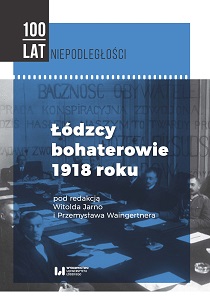
We kindly inform you that, as long as the subject affiliation of our 300.000+ articles is in progress, you might get unsufficient or no results on your third level or second level search. In this case, please broaden your search criteria.

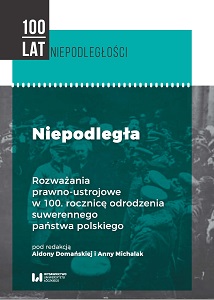




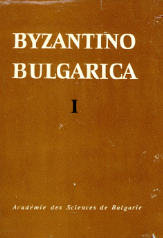

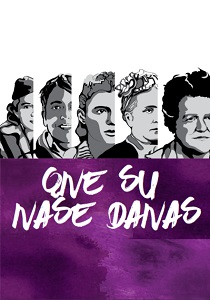
Ravnopravnost spolova je bila važan segment komunističke ideologije. Ona je imala značaj kada je riječ o različitim oblicima uključivanja žena u narodnooslobodilačku borbu. Međutim, kada analiziramo učešće žena na mjestima donošenja značajnih političkih i vojnih odluka, onda možemo zaključiti da je ravnopravnost spolova bila prilično deklarativnog karaktera. Ipak ne možemo poreći da su se u ovom raskoraku između stvarnog i deklarativnog desile ogromne promjene koje će otvoriti novo poglavlje u priči o položaju žena u BiH.
More...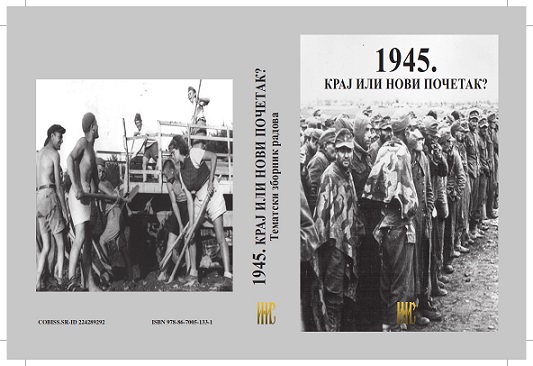
Immediately after the end of World War II, Western Allies organized refugee camps in their occupation zones in Austria, Italy and Germany which existed until early 1950s. Foreign citizens, such as forced laborers and prisoners of concentration camps, who had been found mostly in Germany and Austria after the collapse of the German Reich, were placed in those camps, as well as military and civilian post-hostilities refugees fleeing from the Red Army and partisan-communist forces from Eastern, Central and Southeastern Europe. A great number of persons were extradited to their countries of origin on charges of war crimes. Among them were many Croats, primarily members of the Croatian armed forces and the Ustasha movement. The remaining refugees are displaced around the world especially in countries of South and North America and in Australia.
More...
The inner make-up of the Yugoslav state was changed after WWII by the decision of the Communist Party of Yugoslavia that had come to power in the country. In keeping with the decisions of the second session of the interim partisan parliament (the AVNOJ) federal order was established with six constituent republics. However, the new authorities adopted no criteria how the borders between the republics in the new federation were to be drawn. Thus the solution of this important matter remained in the hands of the Party leadership that had to implement it on the Soviet model. Delimitation between federal republics was made with no legal procedure, without passing any law whatsoever and without participation of leaderships of republics concerned. In the course of drawing borders neither ethnic not historical principles were applied. By setting up Bosnia-Herzegovina as a multi-ethnic republic, the ethnic principle was given up, whereas historical principle was not applied consequently in the case of Serbia because this federal unit was divested of some of the territories belonging to her as she entered Yugoslavia and that had become hers after the wars of liberation 1912-1913. Thus considerable part of the Serbs remained outside their ethnic republic. In keeping with the new slogan of “brotherhood and unity” and using the flamboyant rhetoric in vulgar propaganda it had launched in public, the ruling party downplayed the importance of the borders between republics. It was pointed out that in the new federation of equal peoples the borders would be of secondary importance and that they would rather connect than divide peoples. The leadership of Serbia, dissatisfied with the way the borders had been drawn tried to intercede with the aim of rectifying them, pointing out at the damage done to the Serbian people. This objection, as well as objections of part of the legal opposition comprising the pre-war political parties, failed to influence significantly the already adopted solutions.
More...
Between the end of WWII and the Resolution of the Cominform, Yugoslavia and Czechoslovakia cooperated intensively. Although Czechoslovakia remained a multi-party state and Yugoslavia had experienced a change of government, the continuity of intensive cooperation and improvement of mutual acquaintance from the previous period were maintained. The two countries were tied by the treaty of alliance (the Treaty of Friendship that was signed in Belgrade on May 9, 1946). Their communist parties were members of the Cominform. The Yugoslav leaders relied in development of industry after WWII primarily on Czechoslovakia that was the major trade partner from where goods, licenses and machinery were imported. Czechoslovakia was irreplaceable in Yugoslav plans for industrialization. Cultural cooperation was very rich, manysided and meaningful. It comprised exchange of artists, writers, musicians, painters, scholars, translations, exhibitions, ample sports cooperation etc. Yugoslavia sent students and apprentices to be educated in Czechoslovakia. During three years (1945-1948) 3000 students and apprentices from Yugoslavia passed through Czechoslovak faculties and vocational schools. Tens of thousands of tourists from Czechoslovakia visited the Adriatic and Czechoslovak students, experts and professors toured Yugoslavia during their numerous visits. On every step they recorded and photographed customs, architecture, people, history and arts of the Yugoslav lands. However, the conflict with the Cominform changed everything. Czechoslovakia sided with the Cominform; cooperation grew weaker and was finally terminated on October 9, 1949 as Czechoslovakia canceled the Treaty of Friendship.
More...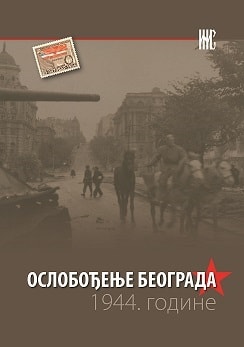
Milan Gavrilović, the leader of the Union of Agriculturists, of anti-German and pro-British persuasion, became the first ambassador of the Kingdom of Yugoslavia to Moscow as diplomatic relations were taken up in June 1940. With a brief recess from early May to mid-July 1941, he remained on that post until the end of 1941. During that time, and after it too, he conceived the most unfavourable opinion about the possible and expected influence of the Soviet Union on the Balkans and in Yugoslavia. Apart from ideological disagreement, the belief that Balkan should be left over to the Balkan peoples contributed to his opinion that the independence of these peoples must be defended against the domination of any great power, as well as against their mutual confrontations. Being sure that this was the true interest of the Balkan states, he espoused the creation of a Balkan federation and he defended his views even at the cost of parting ways with political and personal friends. During the war he was considered a „Greater-Serb“ and „anti-Soviet“.
More...
One of the main features of the German administration in Serbia in WWII was the fact that the occupation policy wasn’t directed from one center. Since the agencies of the military administration were not under unitary command in Serbia, nor did they have clearly delimitated spheres of action, their influence on occupation policy depended on the authority of their positions, i.e. on the place of the superimposed agencies in the complex pecking order of power in the Third Reich. Internal relations between individual occupation factors and the power of their influence were of importance for concrete implementation of the occupation policy and its consequences for the population. The spheres of activity of the occupation administration were divided among four agencies which fulfilled occupation tasks parallely without mutual coordination and often with conflicting interests. Each agency had its main office in Berlin and each had to fulfill its tasks directly, sidestepping the military administration in Serbia. Since security of the troops was endangered by a strong resistance movement and since due to the long protracted war the needs of German war economy steadily increased, the police and economic administration played the leading role in the hierarchy of German occupation agencies.
More...
The defeat in the April War, the break-up of the Yugoslav state and the genocide against the Serbian people were the facts the occupied Serbian society had to face already in the first months of occupation. Realizing the difficulty of the situation, the collaborationists strove to improve it by aiding and supporting the occupiers, believing they would by and by recognize that cooperativeness and reward it by improving the situation of the Serbian people in the German system of the „New Order”. However, in the plans of the Third Reich, there was no place for such opinions. The occupied territory was interesting for them only inasmuch it needed as small forces as possible to keep peace and order in it, with the aim of exploiting it as thoroughly as possible. In that context, although local government was set up to help them run the administration, a complex occupying apparatus was also put in place which interfered drastically with the functioning of the local organs, exercising strict surveillance and control over them. Mistrust of local population, regardless of the degree of collaboration remained the lasting trait of the German occupying apparatus in Serbia.
More...
The author uses documents of Vjacheslav Molotov’s collections from Russian State Archive of Social-Political History (Rossiyskii gosudarstvenniy arhiv sotsialno-politicheskoy istorii / RGASPI. Fond 82) and Archive of Russian Foreign Policy (Arhiv vneshnei politiki Possiiskoy Federatsii /AVPRF: Fond 06), and several others more consistently than before. On the base of synthesis of these documents with already published Soviet and Yugoslav archival documents and the results of still valuable early research conducted by Nikola Popovic, Yuriy Girenko, Leonid Gibianskiy and Vladimir Volkov this article sheds more light on interrelations and coordination between Soviet leadership and J. Broz Tito from January 1944 to beginning of Belgrade operation October 1944. Several stages of these interrelations are discovered and reviewed this time in some cases more detailed than in previous research. The article discusses main events from January 1944 when decision on formation of Soviet military misson to Yugoslavia was made to end of February when it had beem landed to location of Tito’s headquarters assuming that key trends in this period were coordination of Tito’s activity in international field during end of January–early February. Despite the fact that each stage was important during 1944 it seems that April was extraordinary one because of coming of Yugoslav military mission to the USSR, inner Soviet discussions on the ways and means to improve the assistance to Yugoslav people army, and, the third one, Soviet decision to inform Tito by Stalin (that time codename „Friend”) and Molotov (codename „Alekseev”) that not Bulgaria but Yugoslavia is main Soviet ally on the Balkans during this war and after it. According to documents the end of May and early June when two meetings of Stalin with Yugoslav mission was the point when the final shift in understanding of British activity was made. The stage of July–August when the main stress of Yugoslav liberation forces has been shifted on Serbia the Soviets gave Tito free hand in his contacts with Britain and at the same time gave him full support in Yugoslavia by concentrating all assistance in his hands since only after Tito’s approval this assistance might be get by regional detacheemnts. Despite the fact that author could not obtain Soviet documents on secret Tito’ visit to Moscow in September 1944 he continues the reconstruction of context of these events by involving available indirect data around Tito’s meetings with Soviet leaders that time. The article ends with analysis of already published Soviet military documents on preparations of the Red Army early October 1944 before entering Yugoslavia as friendly country on which despite of they were already have been published were not paid attention by researchers until nowdays.
More...
Tito met Stalin for the first time in Moscow between September 21 and 27 1944. Tito himself said about it: „That was the first time in my life that I met Stalin and talked to him. Until then I only saw him from distance, such as at the 7th Congress of the Commintern. This time I had several meetings with him, a couple of them in his office in the Kremlin. He also invited me twice to his private house to dinner.” Judging by this statement, Tito was shown great courtesy. Tito’s idea was to meet Stalin in private. It is possible he talked about that with general Kornjejev, chief of the Soviet military mission with the Supreme Staff of the People’s Liberation Army and Partisan Units of Yugoslavia. Tito informed Stalin about the aim of this conversation in his letter of July 5, 1944. Thus, in the beginning he states that the British were doing their best to strengthen the position of the King and the Chetniks and to weaken the People’s Liberation Army, so that for that reason one couldn’t count on their (British) allied help. Right after that he wrote: „We’ll need your utmost help to solve the problem of Serbia which is very important for us, since the final success and the creation of the Democratic Federal Yugoslavia depends on that.” The letter was ended with the following words: „There are many important matters I would like to discuss with you in person.” Stalin accepted the proposal as well as the topic of the talks. It was political, military and material aid of USSR to the People’s Liberation Movement in Yugoslavia. All Tito’s pleas for aid met with favourable response. Everything that happened between USSR, the People’s Liberation Movement of Yugoslavia and the Royal Yugoslav Government from September 28 onwards was the consequence of Tito’s conversation with Stalin. The direct consequence of talks between Tito and Stalin was the TASS statement of September 28 about the agreement of the „Soviet Command” and the People’s Committee of Liberation of Yugoslavia. With this statement the Soviet government de facto recognized People’s Committee of Liberation of Yugoslavia as the Yugoslav government. This act had great consequences for the development of the People’s Liberation Movement in Yugoslavia. At the same time, the advance of the Red Army into Serbia (Kruševac, Čačak, Belgrade) in October 1944 was the fruit of Tito’s agreement with Stalin. The material aid of USSR for the People’s Liberation Movement in Yugoslavia which followed and lasted until the end of the war had also been agreed upon in Moscow. If Tito asked for „large aid” from Stalin, he got it and sealed it during his talks with him between September 21 and 27, 1944.
More...
The work represents a Historiographie description of Belgrade during the 1944 and 1945. In addition to portraying the city immediately after the liberation, the author describes the war damage on houses, and cultural and industrial monuments and buildings in the capital. The city's cultural features are presented along with its communal capacities and the organization of providing supplies for the inhabitants, in addition to information regarding health service, education, traffic, etc. Local sources are combined with the reports of Fitzroy Maclean, Chief of the British Military Mission, who entered Belgrade a few days after the liberation.
More...
Due to indoctrination, unsatisfying minority position in the Kingdom of Yugoslavia, national enthusiasm because of Hitler’s victories and the whole historical situation which was caused by these and other factors, the Vojvodina Swabians sided with Germany and its allies. Because of that, they enjoyed more or less privileged status in the territory of the Vojvodina after April 1941. However, it was coupled with duty to support the war effort of the Axis powers. In August 1944 the situation started to change dramatically for the worse for them due to the capitulation of Romania. Evacuation started to be contemplated. Detailed plans for evacuating German population from the Banat and from Syrmium were made during September, whereas no such plans (except for Novi Sad) were made for the Backa, so as not to undermine the morale of the allied Hungary. Although the Red Army units were already standing on the border of the Yugoslav Banat in late September, the Volksdeutsche were not given permission to start evacuating. Until this day it is not known who was responsible: Hitler, Himmler or the Senior Chief of the SS-Police in Belgrade, Behrends. The reason was certainly the unwillingness to burden the Reich with refugees and to show, in an indirect way, that the German war machinery was grinding to a halt. When the permission to start evacuating the Banat was finally granted on September 28/29, it was already too late for part of the Volksdeutsche; another part, crushed by weeks long anxiety didn’t want to be evacuated any more. In the Bacska flight and evacuation of the Volksdeutsche started simultaneously with the withdrawal of the Hungarian authorities. The main advocates of the evacuation were people active in Volksdeutsche organizations and relatives of the Waffen-SS members. Those who thought they had done no harm to anyone refused to be evacuated. For that reason, only one half of the Germans left the Bacska. On the contrary, in Syrmium the evacuation was executed according to the plan between mid-October and early November. Some 90% of the Germans left, and large quantities of goods were also evacuated. The remaining Volksdeutsche in the Banat and the Bacska were subject to mass shootings, rape, pillaging, arrests and manhandling by members of the People’s Liberation Army (PLA) and the Red Army. Their freedom of movement was restricted and they were taken to forced labor. Internment of the Swabian population into concentration camps began. On October 17, 1944 Military Administration was imposed in the Banat and the Bacska. It was supposed to fortify the power of the PLA and to use all resources of the province for further war effort. It had a distinct anti-minority taint, and the Hungarians suffered together with the Germans during the first weeks of the new regime – albeit to a smaller extent. The treatment of the Hungarians was relaxed in late November, whereas it became even more rigid for the Germans. In that way October 1944 brought freedom to the Serbian population and the beginning of Calvary for the Volksdeutsche.
More...
The fact about deportation of Germans from territory of Yugoslavia the come to power communists is known. However in the Russian archives documents on participation in it of Moscow contain. Recently published documents allow to restore this process in detail enough. On December, 16th, 1944 the State Committee of Defense of the USSR has accepted the decision about mobilization and internment for use on works in the USSR „all able-bodied Germans in the age of - men from 17 till 45 years, women from 18 till 30 years which are being on released Red Army of territory of Romania, Yugoslavia, Hungary, Bulgaria and Czechoslovakia“. The management of operation has been assigned to comrade Beriju. Directly for Yugoslavia and Bulgaria answered Tolbukhin and Biruzov. Till 19 January, 1945 from the Balkan countries 67930 Germans have been sent to the USSR, including from Yugoslavia – 10935 persons. The Interned Germans worked in the USSR till the spring 1946.
More...